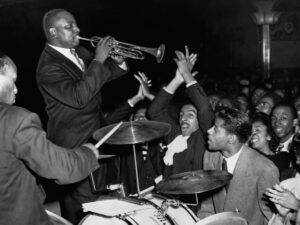
Conclusion
The Harlem Renaissance gave way to a new expression of African American poets and allows them to express their identity and culture. Her childhood was plagued by the experience of abuse alongside that of racial inequality, so Angelou developed her poem “Still I Rise” as an inspirational work to demonstrate her unwillingness to back down from the societal challenges. Full of figurative language, symbols, and other poetic features, she uses an honest and straightforward tone to incriminate society for the pain that has been and continues to be inflicted on her community. She conveys her pride in her race and identity. She draws on memories of the past while addressing hope for her future. With the focus of black unity and social awareness of injustice, Angelou, Lorde, and Hughes made monumental impacts on American culture with the broadcast of their poems. The three authors optimized this opportunity to write about their feelings of discomfort from living in an unequal society, and they protest the suffering that their particular race experiences. They reference the past rooted in slavery – discussing those still relevant beliefs at the time – and draw attention to the elements of black culture, like the popularity of jazz and blues music.

Assertive and confident, all three of these authors had in common the themes of racial pride, self-expression, and community as they incorporated African American vernacular and many literary elements. Lorde used more colorful metaphors and poetic language; whereas, Hughes and Angelou were more direct and incorporated more of the African American slang (though they did incorporate literary elements). Overall, there were more similarities than differences between the work of the three authors corpora in terms of meaning and style.